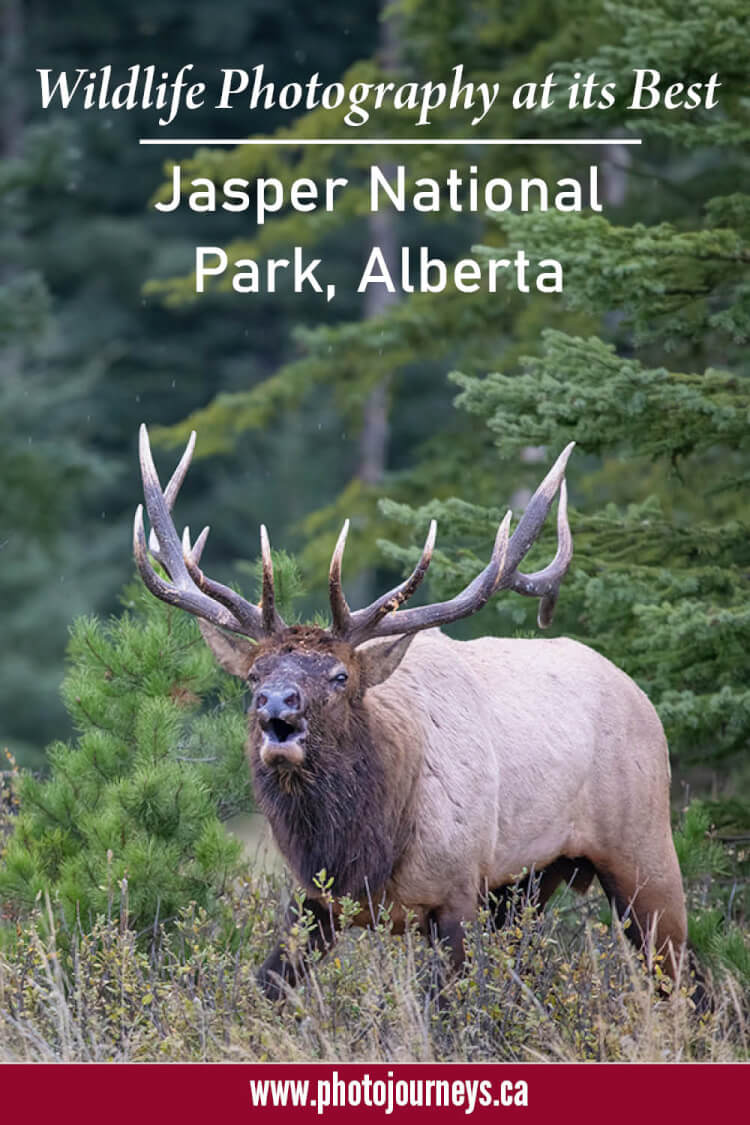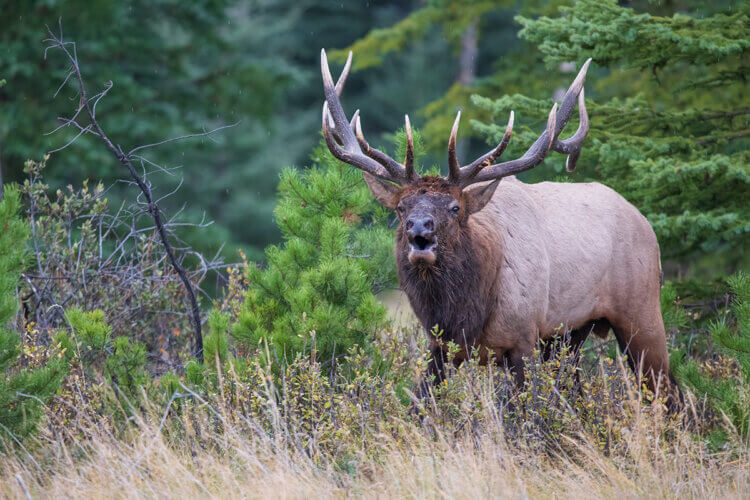
All photos © Robin and Arlene Karpan
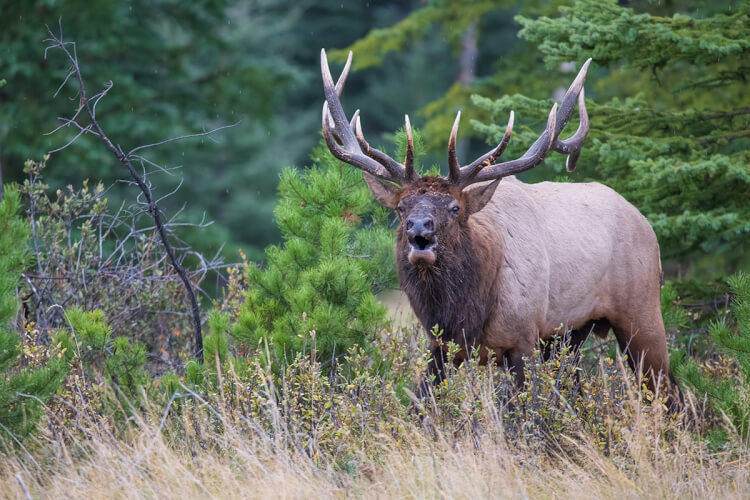
Of all of the spectacular national parks in the Canadian Rockies, Jasper National Park is our favourite for wildlife photography. It seems that every time we come here, wildlife sightings and photography keep getting better. Jasper has 53 mammal species – everything from moose to black and grizzly bears, elk, mule and white-tailed deer, bighorn sheep, mountain goats, wolves, and coyotes, to name only a few.
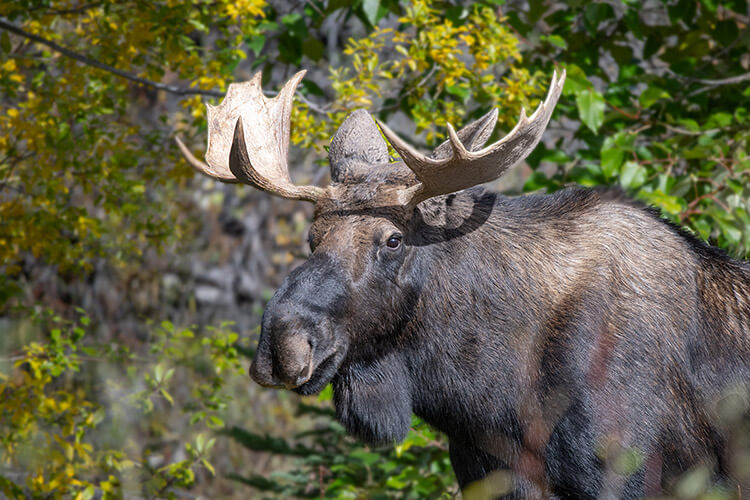
Jasper is also the largest Rocky Mountain national park, and with a variety of habitats, the wildlife has a lot of space to wander around. Despite all that space, we can find a surprising number of animals close to the many roads and trails, and even around Jasper townsite. Since it’s located in one of the largest valleys in the Canadian Rockies, wildlife tends to be drawn not only to the townsite, but also to surrounding areas.
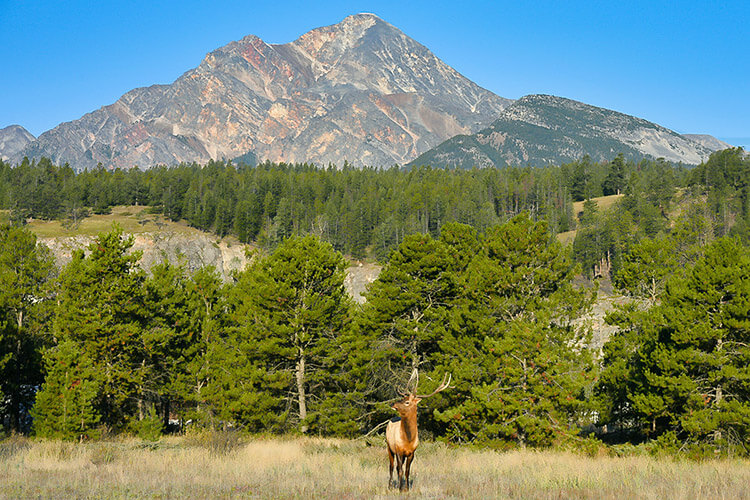
Elk and the flamboyant fall rut
If you did nothing else but photograph elk, it would be reason enough to visit Jasper. Indeed, a lot of wildlife photographers come here specifically for that reason. Elk make great photo subjects any time of year, but during the fall rut or mating season, their antics provide some compelling action shots. During September and October, the bulls try to attract cows, and are forever rounding up their harems and threatening competing bulls. We hear almost constant bugling from the bulls, a piercing sound that can send shivers down your spine. It’s intended both to attract females and to warn off other bulls. The action can be heated at times with bulls chasing each other and fights breaking out.
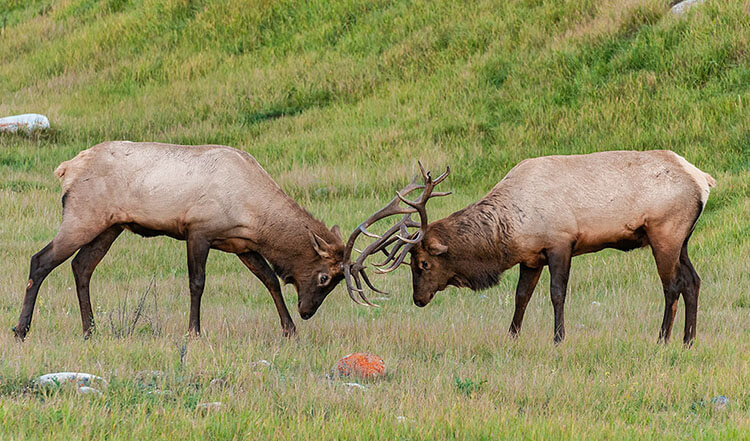
But doesn’t this happen everywhere that elk live, you may ask? Yes, it does, but in Jasper, so much of the action takes places where we have fairly easy access. While the elk could be anywhere and move around a lot, they tend to like hanging out close to the Jasper townsite, along the Yellowhead Highway, in and around Whistlers Campground, and throughout the expansive grounds of Jasper Park Lodge.
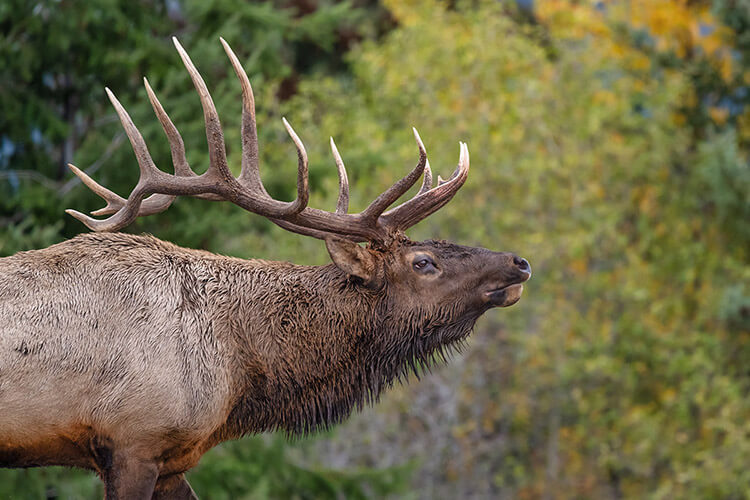
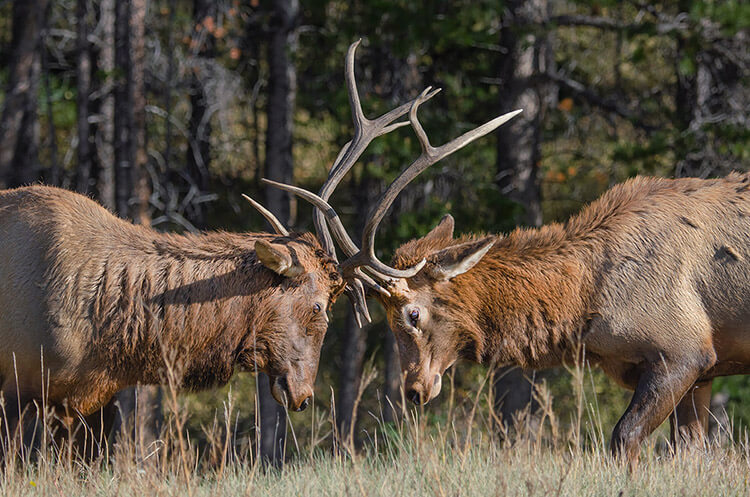
Quite often, we can photograph from a pullout on the side of the road and stay close to or even in our vehicles, making it considerably safer than being out in the open. During the rut, belligerent and bad-tempered bulls could charge people and vehicles; there are lots of cases of bull elk hammering cars with a few well-placed whacks from their huge antlers. It’s important to photograph from a safe distance and be ready to move on instantly if a bull displays aggression.
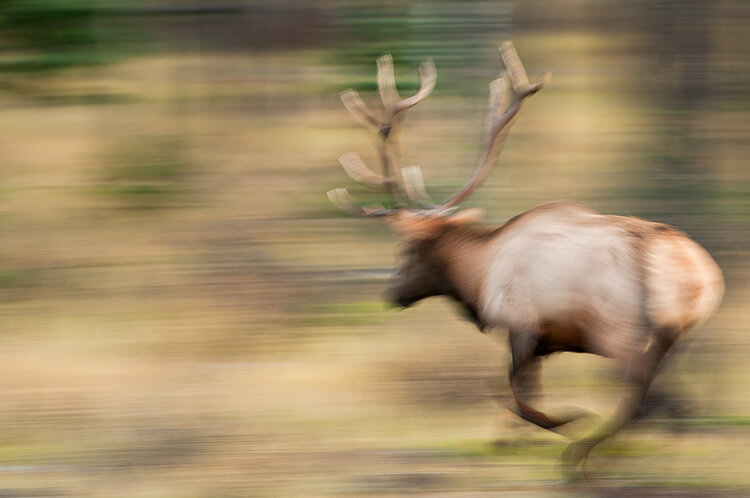
During our recent visit this fall, we had some of the most memorable elk encounters right in Whistlers Campground, with campers having a ringside seat. The elk were constantly milling around and a few bulls were competing for attention. At one point, three bulls converged on the same area, with lots of posturing, almost non-stop bugling, and even chasing each other, antlers to the ready. We could hear bugling throughout the night, so even a walk to the bathroom called for caution since we didn’t know what might be lurking in the shadows.
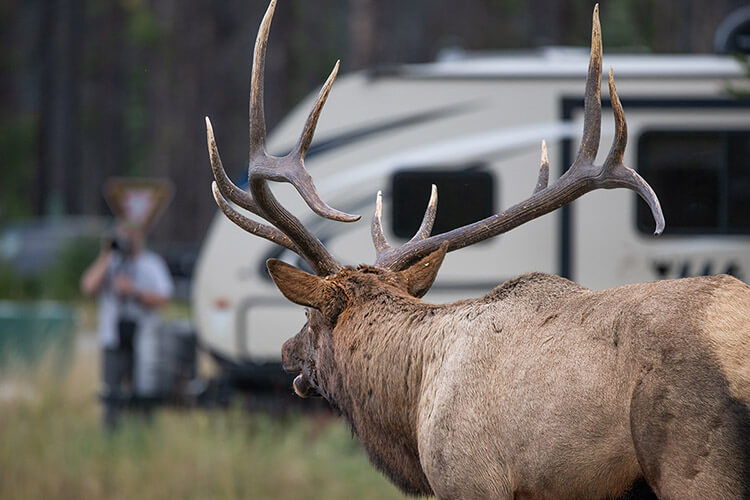
Bears and moose in Jasper National Park
Both black bears and grizzlies call Jasper home, with black bears being a lot more common. The best chance of photographing bears is when they frequent roadsides. Bears can be unpredictable and potentially dangerous, and could charge without warning, so it is extremely important not to get too close. Sometimes it is possible to photograph bears from inside your vehicle at a roadside pull-off.
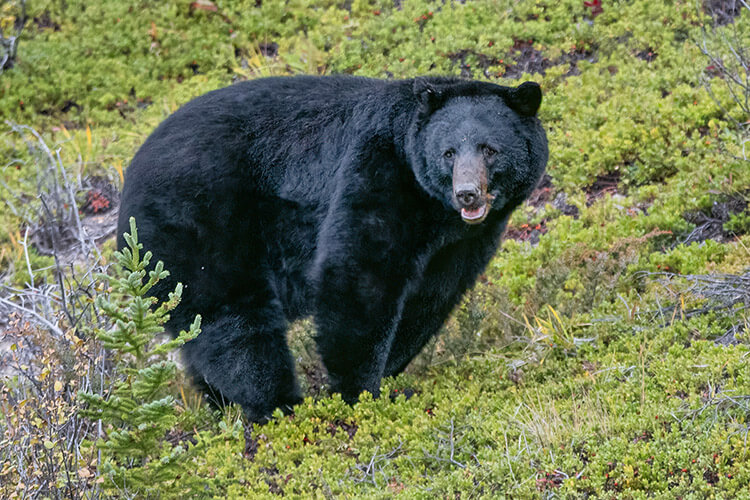
Moose tend to be more elusive and harder to find, but they are around. These impressive creatures are the largest members of the deer family. When you come across a moose outside of national parks, they tend to immediately hightail it and don’t like to hang around people. But those in the park appear to be much less concerned and seem to know that they can’t be hunted. However, it’s still important not to get too close since the bulls can be unpredictable and sometimes aggressive, especially during the fall mating season.
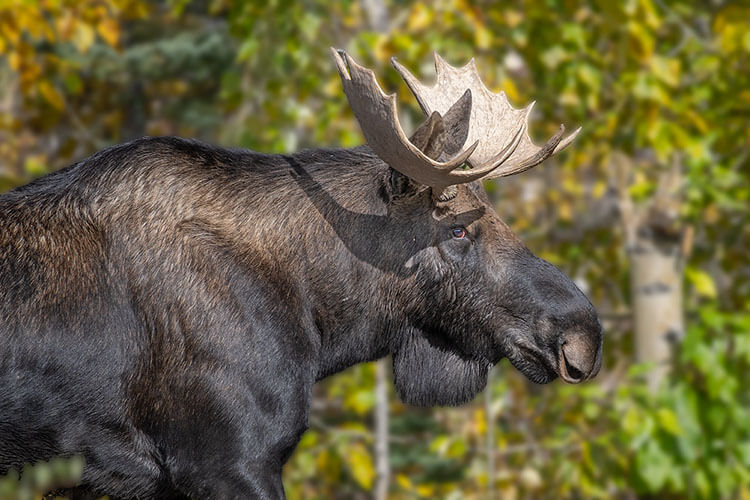
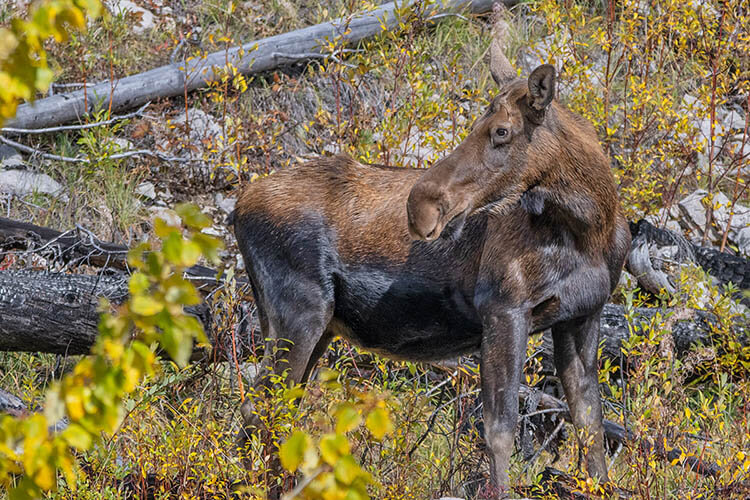
While moose could be anywhere, the Maligne Lake Road and Maligne Lake area itself tend to be top spots for finding them. We came across this one near Medicine Lake. Nearby Moose Lake got its name for a reason. Other moose hotspots recommended by Parks Canada are the Pocahontas wetlands and Yellowhead Pass.
Sheep and goats
Bighorn sheep spend much of the summer in high alpine meadows and then wander down to lower grassy slopes later in the year. The rams have impressive curved horns while the females’ horns are shorter and spiky. It’s amazing how agile they are while climbing around rocky slopes that look impossibly steep. Sometimes it’s possible to see rams crashing horns together during the fall mating season.
Like all wildlife, they move around a lot. One area where we have seen them a few times is along the Yellowhead Highway (#16) a bit east of Jasper townsite, especially near the junction with Maligne Lake Road. Another area to look for them is south along Icefields Parkway near Tangle Falls.
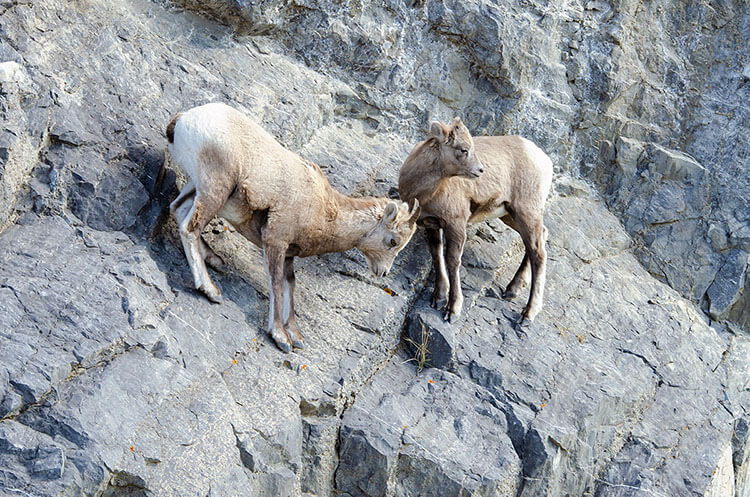
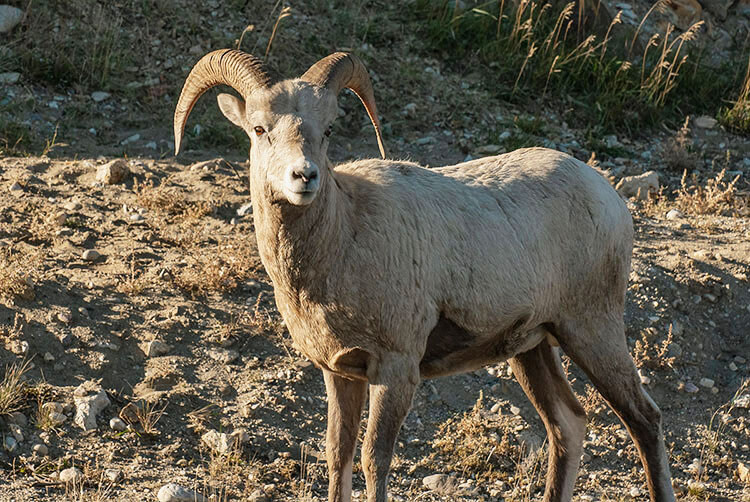
With their brilliant white shaggy coats, beards, and sharp pointed horns, mountain goats are high-altitude specialists usually found in alpine and sub-alpine areas. They are extremely sure-footed on wild rocky terrain. Despite the name, they are not true goats but belong to a family of mountain antelopes. Parks Canada recommends the Mount Kerkeslin Goat Lick Viewpoint along the Icefields Parkway and Disaster Point along the Yellowhead Highway heading east as good prospects to find them. We saw these two along the Icefields Parkway close to the Columbia Icefield.
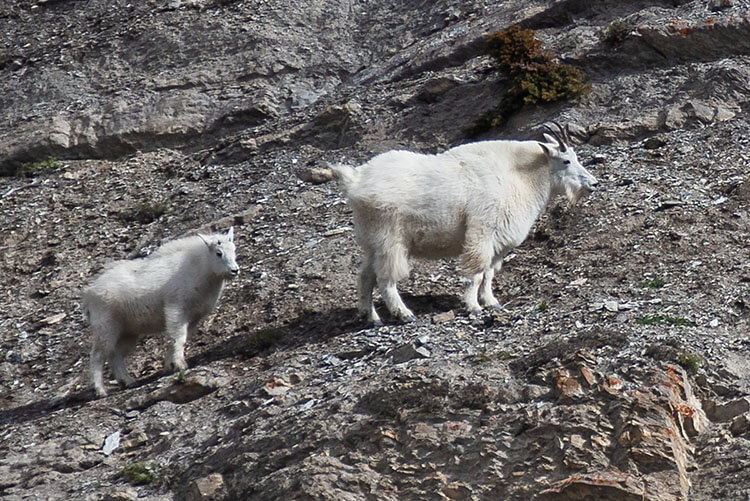
Pikas
Pikas are great fun to photograph. These little guys, which live only in high alpine areas, are members of the rabbit family. With short stout bodies only around seven to eight inches in length, they seem more like gigantic mice, but without tails. We usually find them on rock slides or rocky slopes.
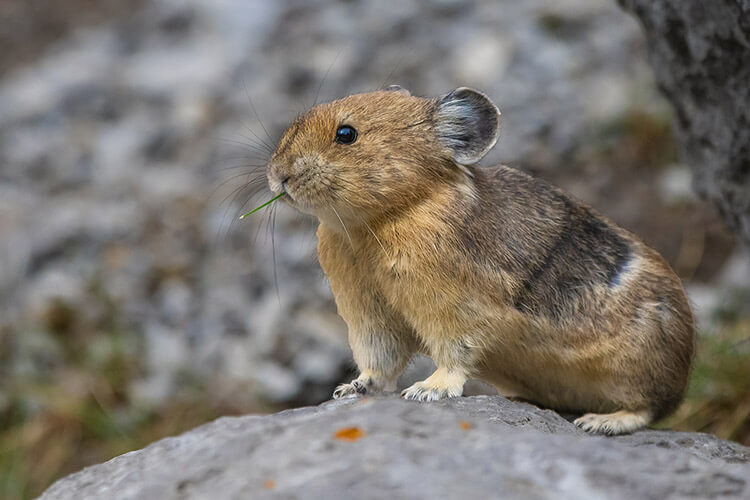
One spot in Jasper where we have never failed to find them is Medicine Lake. As you travel along the Maligne Lake Road, stop at the first viewpoint over Medicine Lake. From the parking area, a staircase heads down to the lakeshore. Look for pikas in the jumble of rocks near the bottom of the staircase.
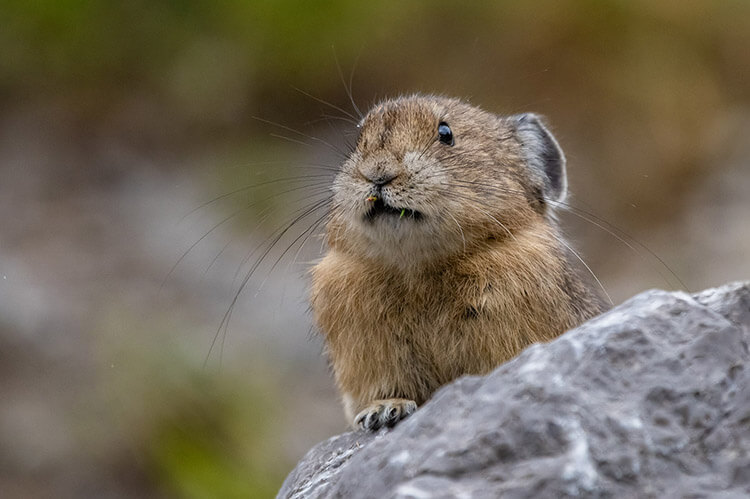
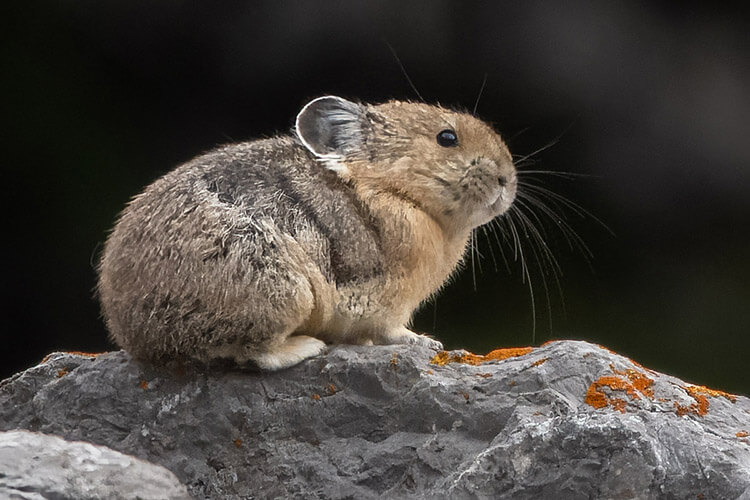
You might hear them first, making high-pitched “eep” sounds. They are well camouflaged, much the same colour as the rocks. We found that the best approach is to find approximately where they are by listening for their calls, or watching for quick movement as they scurry around. Pick a comfortable rock and wait. If you’re still and don’t move around a lot, they will usually go about their business, which is often gathering grass and other plants for food.
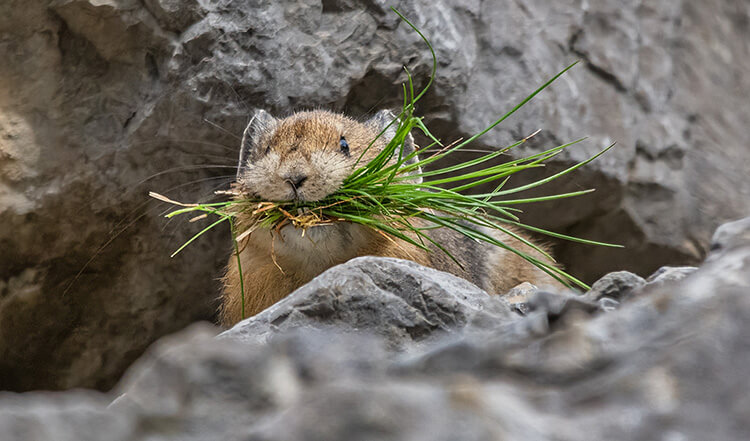
Another pika hotspot recommended by Parks Canada is among the rock slides at Mount Edith Cavell, which is also worth visiting for the spectacular scenery and great hikes at the end of the road.
Other small critters in Jasper National Park
The Columbian ground squirrel is one of the most commonly seen animals in the park, especially in summer. They are an important source of food for bears, wolves, coyotes, and other predators.
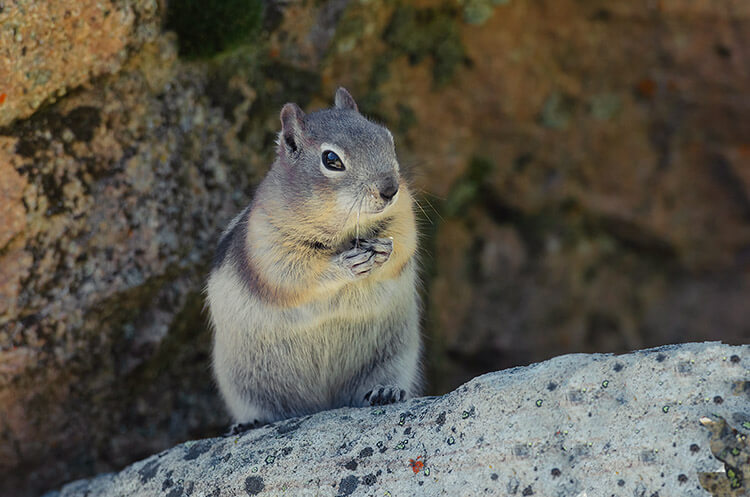
The most photogenic small animal is the hoary marmot, a large rodent that can weigh up to 12 kilograms. It’s the largest ground squirrel in North America. They tend to be more tolerant of people than many animals and they sometimes even seem to pose for photos. We found this one near Medicine Lake, but an even more common area to find them is Whistlers Mountain. The mountain was even named for the loud whistling sound they make. You can get to the top of Whistlers Mountain on the Jasper Skytram which takes you to an altitude of 2,263 metres where some great hiking trails wind across the rugged alpine terrain.
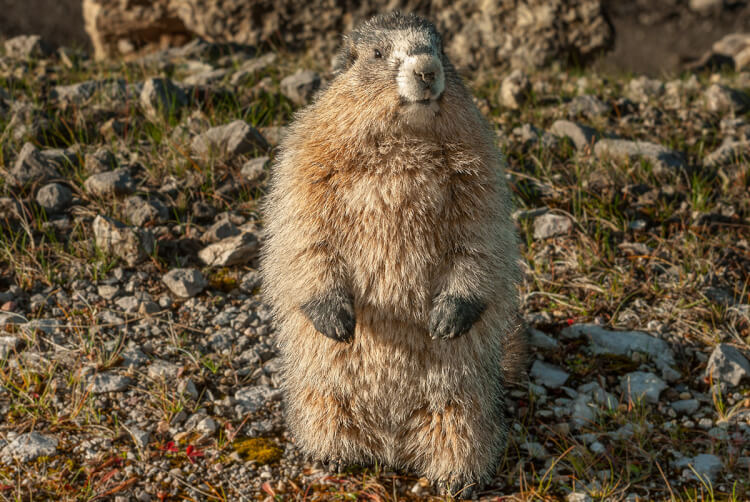
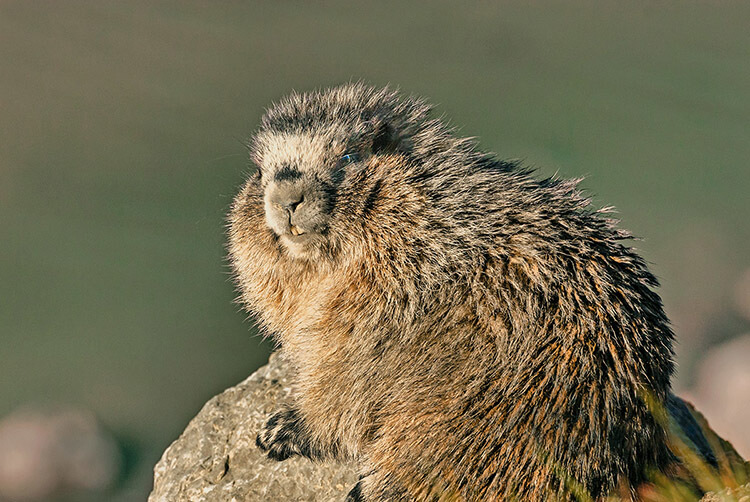
Photography essentials for Jasper National Park
As far as photographic equipment is concerned, the longer the telephoto lens the better. This doesn’t mean that you can’t get good shots with shorter lenses, but a longer lens such as 550mm or 600mm allows you to stay far enough away so as not to disturb the animals and to remain safe while photographing potentially dangerous critters such as bears, moose, and bull elk during the rut. Parks Canada has safety guidelines when encountering wildlife. For example, you should stay at least 30 metres away from elk, deer, and moose, and 100 metres away from bears. Traffic highway jams pose another potential safety hazard when people walk around and between stopped vehicles.
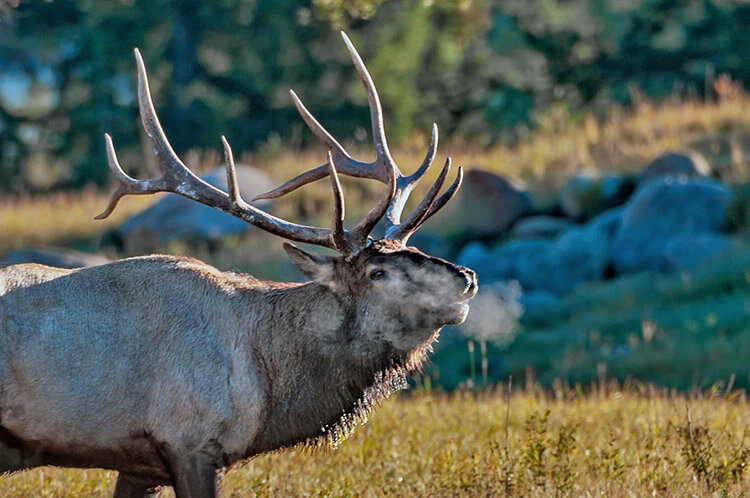
We always travel with a tripod but don’t use it often for wildlife in Jasper National Park. In most cases, you need to react quickly by hand-holding the camera and don’t have the luxury of time to set up a tripod. Something that is even more useful is a beanbag, or something similar, that you can put over the open window of your vehicle to steady a long lens.
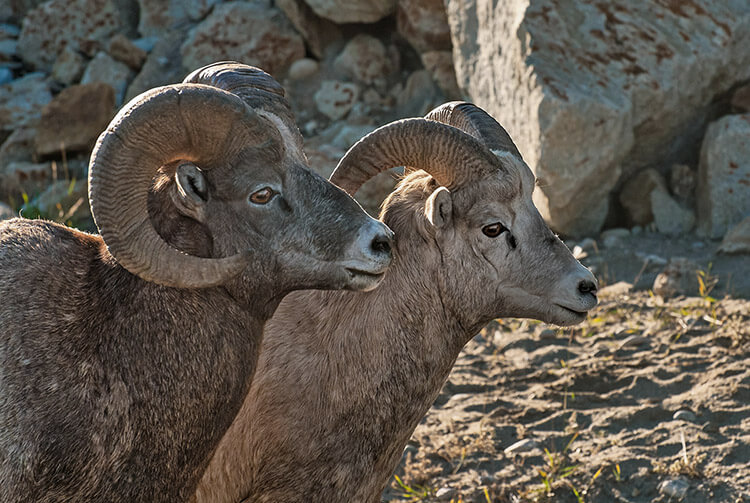
Jasper has a lot more than wildlife
Of course, wildlife certainly isn’t the only attraction in Jasper. It boasts magnificent mountain landscapes, several super hiking trails, scenic drives, waterfalls galore, and much more. It’s a spectacular park for landscape photography as well. We’ll be covering some of those other activities and attractions in future articles.
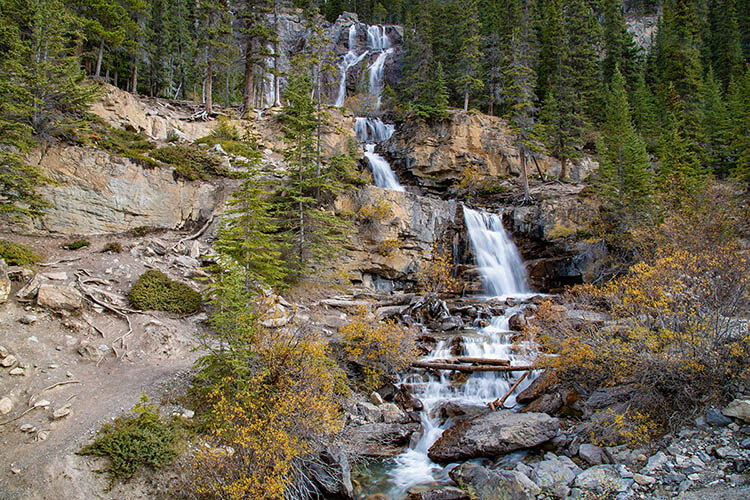
Where to stay and visitor resources
The park has a wide range of accommodation options, including several campgrounds. Whistlers Campground just south of Jasper townsite is the largest and has the added advantage of being a hotspot for elk activity during the fall rut. Check out the Parks Canada website for more information on all of the campgrounds and opening times.
Tourism Jasper is the place to go for the full range of accommodation options, as well as information on points of interest and activities. If you’d like to treat yourself to a bit of luxury, the accommodation option that really stands out is the Fairmont Jasper Park Lodge. Spread over 700 acres, it’s long been the premier Jasper resort. An added advantage from a wildlife perspective is that the lodge’s location next to Lac Beauvert and the Athabasca River makes it a wildlife magnet. Bears sometimes visit the golf course, and elk wander through the grounds during the rutting season.
SUBSCRIBE to Photojourneys below.
Feel free to PIN this article on Wildlife Photography in Jasper National Park
